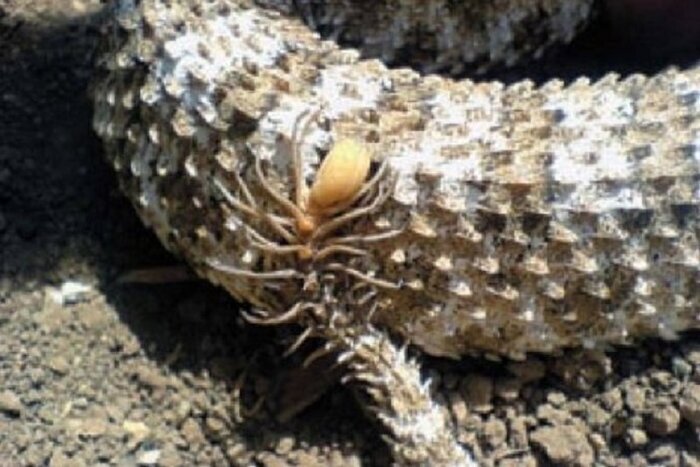In the natural world, survival often hinges on an organism’s ability to adapt, hide, or deceive potential predators. Among the most fascinating examples of defensive adaptation is the spider-tailed horned viper (Pseudocerastes urarachnoides), a remarkable snake species that has evolved an extraordinary camouflage technique. When threatened, this serpent contorts its body into a configuration that stunningly resembles a scattered cluster of pebbles, effectively “disappearing” into its rocky habitat. This remarkable defense mechanism represents one of nature’s most ingenious evolutionary solutions to the constant pressure of predation, offering a glimpse into the complex arms race between predator and prey that has shaped life on Earth for millions of years.
The Spider-Tailed Horned Viper: Nature’s Master of Disguise
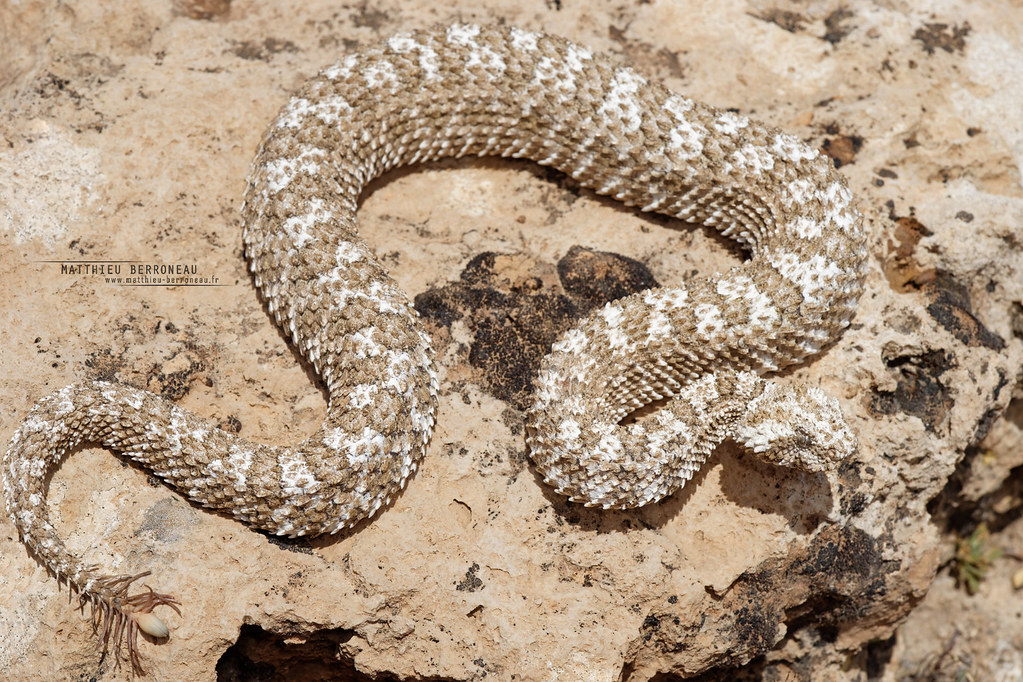
The spider-tailed horned viper (Pseudocerastes urarachnoides) stands as the primary species known for its exceptional pebble-mimicking defensive behavior. Native to the rocky, arid regions of western Iran, this viper was only formally described by science in 2006, making it a relatively recent discovery despite its evolutionary ancient adaptations. The snake’s scientific name offers clues to its distinctive features: “Pseudo” meaning false, “cerastes” referring to horns, “ura” meaning tail, and “arachnoides” relating to spiders—a nod to another of the snake’s remarkable adaptations, a spider-like tail lure used for hunting. When not mimicking pebbles, this medium-sized viper typically displays a sandy, brownish coloration patterned with darker spots and blotches that already provides excellent camouflage against its natural habitat.
The Evolutionary Advantage of Pebble Mimicry
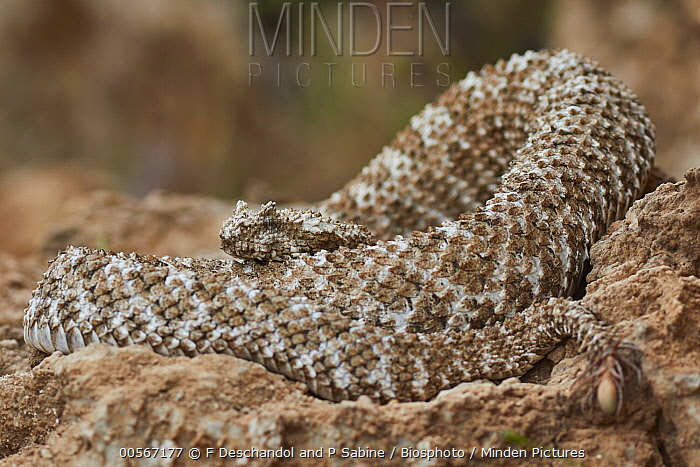
The pebble-mimicking behavior represents a sophisticated form of defensive mimicry that has evolved through natural selection over countless generations. In the harsh, predator-rich environments where these vipers dwell, individuals with body shapes, patterns, and behaviors that even slightly resembled their rocky surroundings would have gained a survival advantage, allowing them to pass these traits to offspring. Over time, this selection pressure refined the mimicry to its current remarkable state of perfection. This adaptation serves as a form of crypsis—a method of avoiding detection—rather than aposematism, which would involve warning coloration to advertise toxicity. The evolutionary investment in such precise mimicry suggests that visual predators, particularly birds of prey with keen eyesight, have been significant selection forces in the viper’s evolutionary history.
The Mechanics of the Transformation
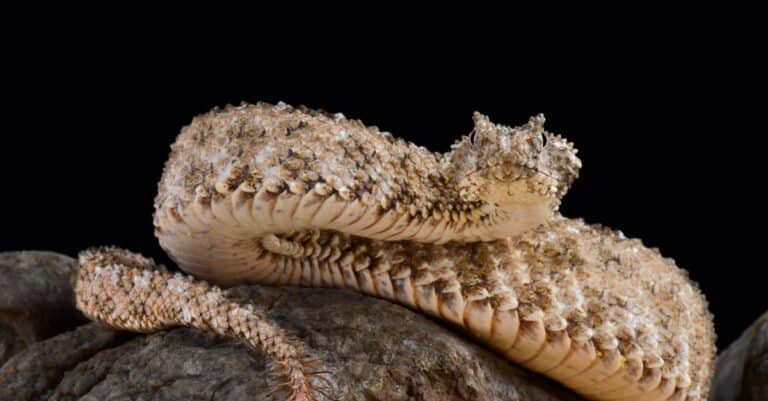
When threatened, the spider-tailed horned viper executes a precise series of movements to achieve its pebble-like disguise. First, the snake coils its body into tight, irregular loops rather than the typical defensive striking position seen in many other vipers. Next, it flattens sections of its body against the ground at various angles, creating the illusion of separate objects rather than a continuous serpentine form. The snake’s naturally keeled scales—raised in the center to create a rough texture—enhance the visual effect by mimicking the uneven surface of actual rocks. Perhaps most remarkably, the viper can hold this position motionless for extended periods, sometimes hours, displaying exceptional muscle control and patience that further contributes to the effectiveness of the disguise.
Visual Adaptations That Perfect the Illusion
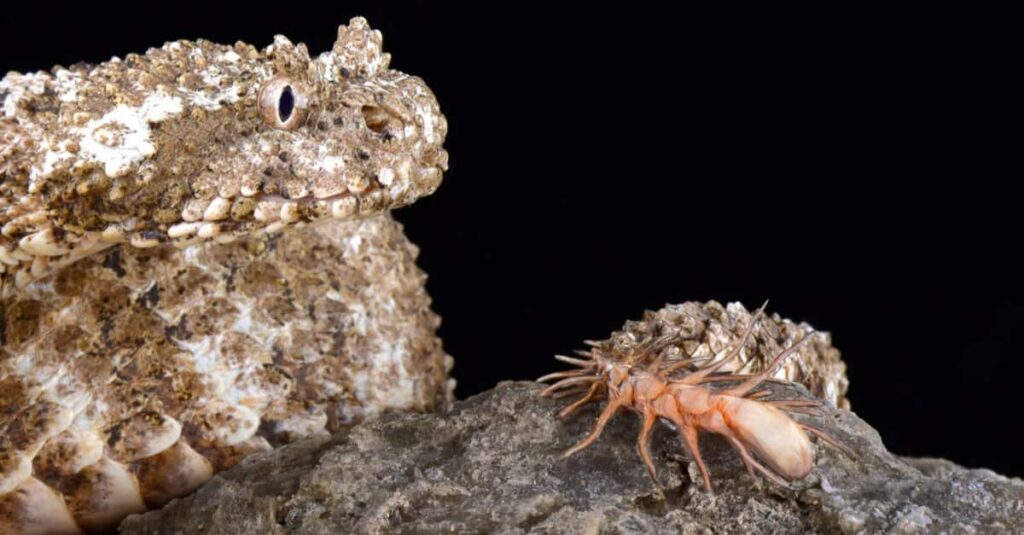
The spider-tailed horned viper’s ability to mimic pebbles extends beyond mere body positioning to include sophisticated visual adaptations. The snake’s coloration features a complex mottled pattern that breaks up its outline when viewed from above, a principle similar to military camouflage. This disruptive coloration works in concert with the viper’s distinctive scale pattern, which creates small shadows and highlights that mimic the texture of surrounding rocks. The snake’s head, typically the most recognizable part of a serpent, becomes nearly indistinguishable when tucked among its coils. Even the viper’s eye, which might otherwise betray its presence, can be partially concealed by specialized supraocular scales that serve as natural “sunglasses,” reducing eye shine that might catch a predator’s attention.
Habitat Specialization and Mimicry Effectiveness
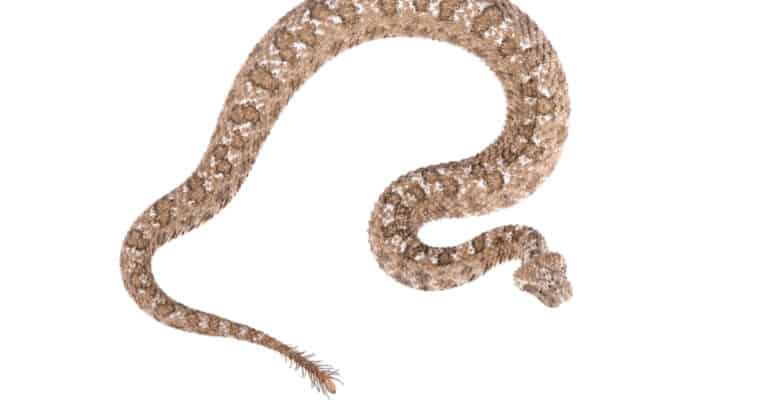
The pebble-mimicking adaptation is intimately tied to the spider-tailed horned viper’s specific habitat preferences. These snakes inhabit rocky mountain slopes, gravel plains, and stone-strewn valleys where their camouflage reaches its maximum effectiveness. The viper’s range in western Iran’s Zagros Mountains features predominantly limestone and sandstone formations that weather into precisely the color and texture the snake has evolved to mimic. Field studies have demonstrated that the camouflage is most effective at distances of three meters or greater, at which point even trained herpetologists have difficulty distinguishing the coiled snake from surrounding rocks. This habitat specialization represents an evolutionary trade-off, as the adaptation that makes the snake nearly invisible in rocky terrain would be far less effective in grasslands, forests, or other environments.
Predators and the Arms Race of Perception
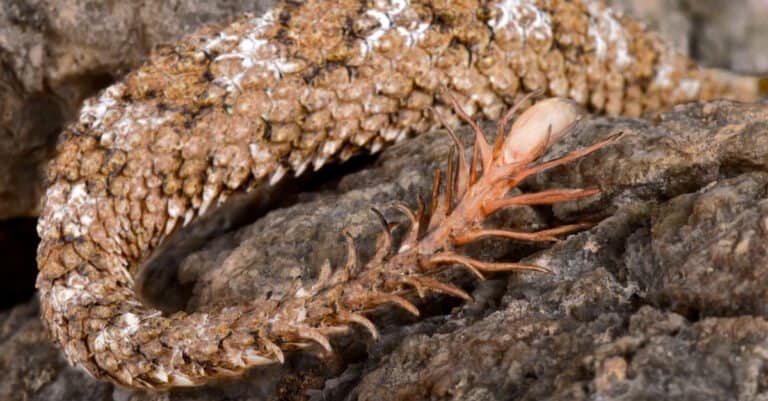
The sophistication of the spider-tailed horned viper’s pebble mimicry reflects the equally sophisticated visual systems of its natural predators. Birds of prey like eagles and hawks possess color vision and visual acuity far superior to human perception, capable of spotting small movements from considerable heights. Mammalian predators, including foxes and wild cats native to the viper’s range, rely on movement detection and olfactory cues that the snake’s stillness helps to counteract. This has created an evolutionary arms race wherein predators evolve better detection abilities while the viper refines its camouflage and behavior. Research suggests that even with their enhanced senses, predators often pass by the disguised viper without detection, particularly during daylight hours when the visual mimicry is most effective against diurnal hunters.
Beyond Pebbles: The Spider-Tail Hunting Lure
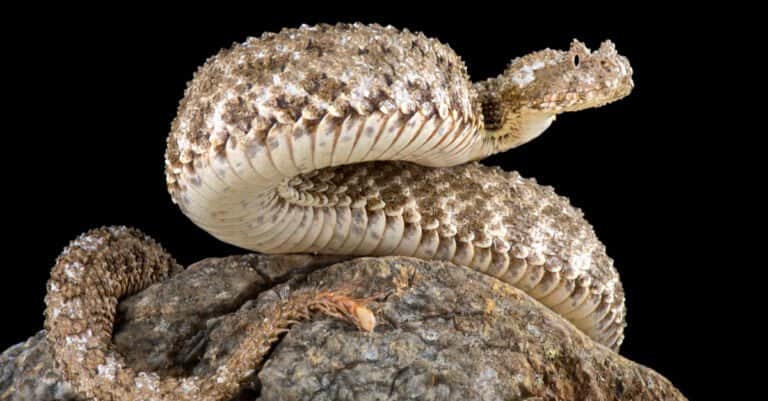
The spider-tailed horned viper’s remarkable adaptations extend beyond defensive mimicry to include an equally impressive offensive strategy. The end of its tail features a specialized structure that bears an uncanny resemblance to a moving spider or scorpion, complete with leg-like projections and erratic movements. This adaptation serves as a hunting lure, attracting insectivorous birds close enough for the viper to strike. The dual nature of the viper’s mimicry—defensive pebble mimicry and offensive prey mimicry—represents one of the most sophisticated examples of evolutionary adaptation in the animal kingdom. The contrast between the snake’s absolute stillness when mimicking pebbles and the deliberate movement of its tail lure demonstrates the remarkable behavioral flexibility that has contributed to the species’ survival despite its specialized niche.
Similar Adaptations in Other Snake Species
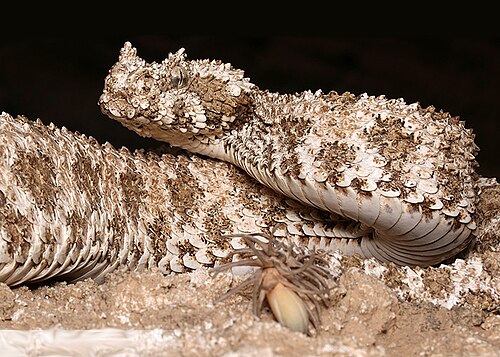
While the spider-tailed horned viper represents perhaps the most specialized case of pebble mimicry, several other snake species employ similar, if less elaborate, techniques. The saw-scaled viper (Echis species) can coil its body into irregular loops that break up its outline against desert floors. Certain populations of hognose snakes (Heterodon species) may flatten and contort their bodies to blend with leaf litter and small stones when their primary defense of playing dead fails to deter a predator. The gaboon viper (Bitis gabonica) doesn’t mimic pebbles specifically but possesses perhaps the most elaborate camouflage pattern of any snake, perfectly matching fallen leaves and forest floor debris. These parallel adaptations in unrelated species demonstrate convergent evolution—the process by which similar environmental pressures lead to similar adaptations in organisms that aren’t closely related.
Scientific Discovery and Recent Research
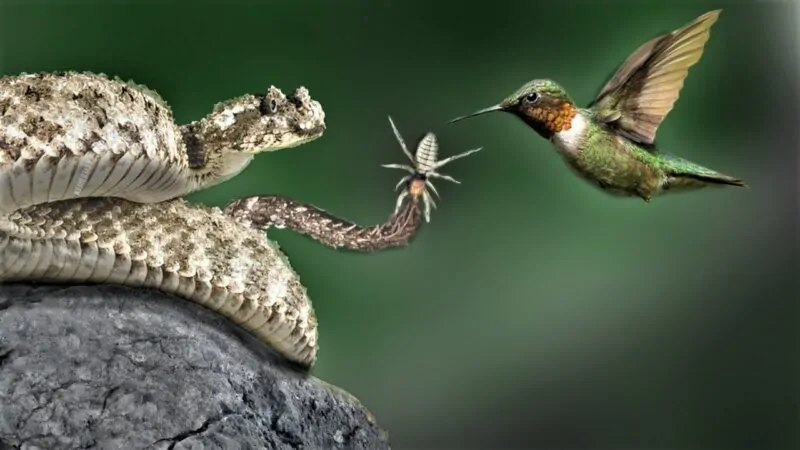
The scientific understanding of the spider-tailed horned viper’s pebble-mimicking behavior remains relatively recent, with significant discoveries still emerging. The species itself was only formally described in 2006 by Iranian researchers, and detailed behavioral studies have been limited by the snake’s remote habitat and venomous nature. Recent research using high-speed video analysis has revealed previously unrecognized subtleties in how the viper achieves its disguise, including micro-adjustments to its position based on lighting conditions and surrounding terrain. Genetic studies are beginning to identify the evolutionary relationship between this species and other vipers, potentially shedding light on when and how this specialized adaptation emerged. Conservation biologists are also studying how habitat disturbance and climate change might affect the effectiveness of this camouflage strategy, as changing landscapes could potentially disrupt the visual match between snake and environment.
The Role of Pebble Mimicry in Snake Conservation
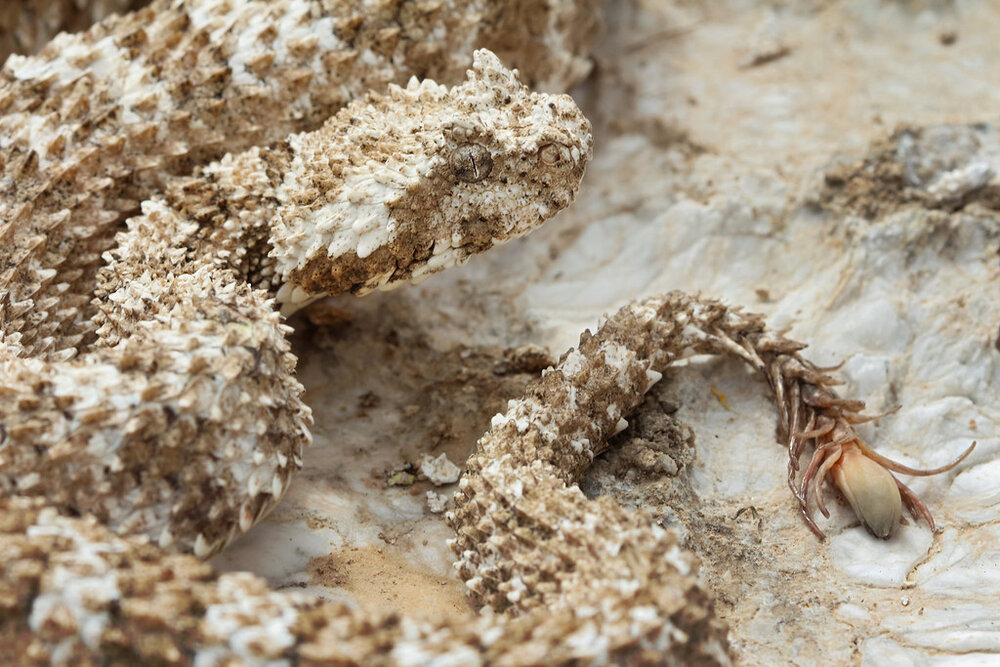
The spider-tailed horned viper’s specialized adaptations make it particularly vulnerable to environmental changes, elevating conservation concerns for this remarkable species. The snake’s reliance on specific rocky habitats means that mining operations, road construction, and other development in its limited range can have disproportionate impacts on population viability. Climate change presents another threat, as warming temperatures may force the viper to seek higher elevations where the terrain might not support its specialized camouflage strategy as effectively. Paradoxically, the same defensive adaptation that makes these snakes nearly invisible to predators has also made them difficult for researchers to locate and study, complicating conservation assessments and population monitoring. Conservation efforts currently focus on habitat protection in the Zagros Mountains of Iran, though political tensions have sometimes limited international scientific collaboration essential for comprehensive conservation planning.
Cultural Significance and Human Encounters
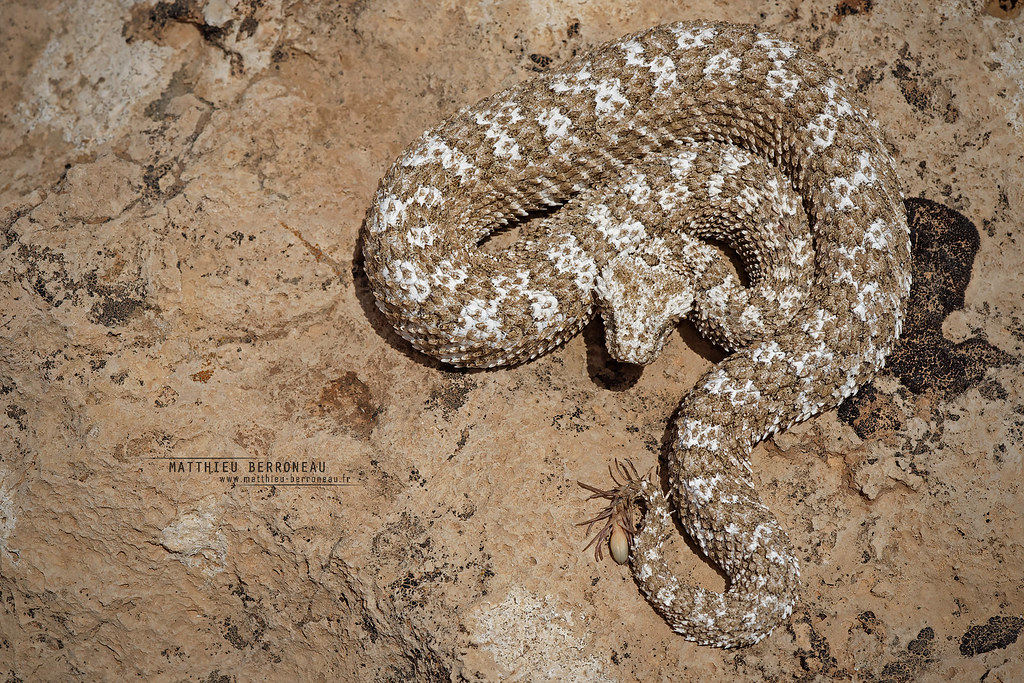
The spider-tailed horned viper’s remarkable camouflage ability has earned it a place in the folklore of indigenous communities throughout its range. Local shepherds and nomadic peoples have long recognized the snake’s unusual behavior, incorporating warnings about “stone vipers” into traditional knowledge passed between generations. Despite its venomous nature, direct human encounters remain relatively rare due to the snake’s remote habitat and effective camouflage. When encounters do occur, they often happen when humans inadvertently disturb a disguised snake, mistaking it for the rocks it mimics. Wildlife photographers and documentary filmmakers have taken particular interest in capturing this behavior, though many spend days searching before successfully locating and documenting a specimen, testament to the effectiveness of the snake’s disguise even against human observers specifically looking for it.
Ethical Considerations in Studying Camouflaged Species
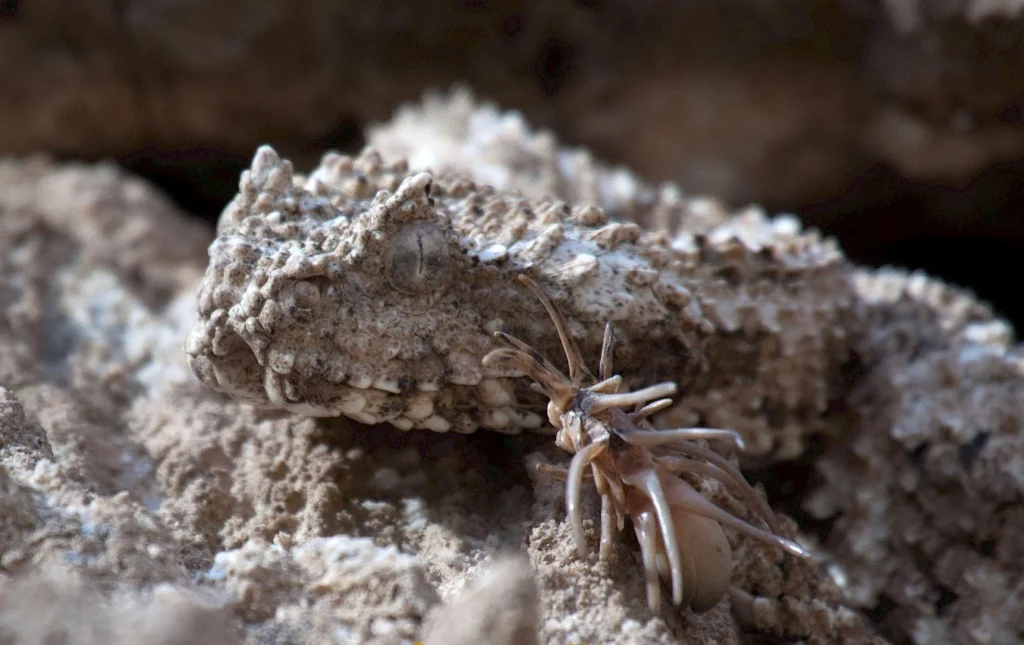
The study of highly camouflaged species like the pebble-mimicking viper presents unique ethical challenges for researchers and wildlife enthusiasts. The very act of locating these snakes for study often requires disturbing their defensive strategy, potentially exposing them to predation risk once humans depart. Researchers have developed protocols to minimize such impacts, including limiting observation times and ensuring snakes are left in secure locations. Photography of these specialized adaptations presents another ethical dimension, as published images sometimes include location data that could lead to collection for the illegal exotic pet trade, a growing threat to many specialized reptile species. Conservation photographers increasingly remove geographic metadata from images and withhold specific location details when publishing documentation of the spider-tailed horned viper and similar species with high appeal in wildlife trafficking markets.
The Future of Pebble Mimicry Research
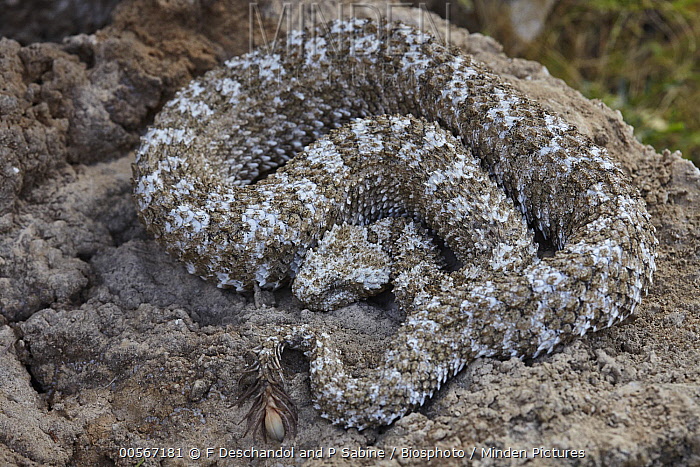
Emerging technologies promise to expand our understanding of the spider-tailed horned viper’s remarkable pebble-mimicking adaptation in coming years. Thermal imaging cameras are beginning to reveal how these snakes may regulate their body temperature differently when in defensive posture, potentially helping them maintain the perfect stillness required for the disguise. Computer vision and machine learning algorithms are being applied to quantify exactly how effective the camouflage is against different backgrounds and from various viewing angles and distances. Comparative genomic approaches may soon identify the specific genetic foundations of this behavior, potentially revealing whether it evolved once or multiple times independently. As climate change alters the viper’s habitat, ongoing monitoring will track whether this specialized adaptation retains its effectiveness or whether the species can adapt its behavior to changing conditions—a critical question for predicting its long-term survival prospects.
In conclusion, the spider-tailed horned viper’s ability to mimic a cluster of pebbles represents one of nature’s most remarkable examples of defensive adaptation. This behavior, combining precise body positioning, specialized coloration, textured scales, and extraordinary patience, demonstrates the incredible power of natural selection to shape living organisms in response to environmental pressures. As we continue to study and understand this fascinating defense mechanism, we gain not only insights into evolutionary biology but also a deeper appreciation for the countless subtle and sophisticated ways that life has adapted to survive on our planet. The pebble-mimicking viper stands as a testament to nature’s ingenuity and the endless variety of solutions that have emerged in the ongoing evolutionary dance between predator and prey.

